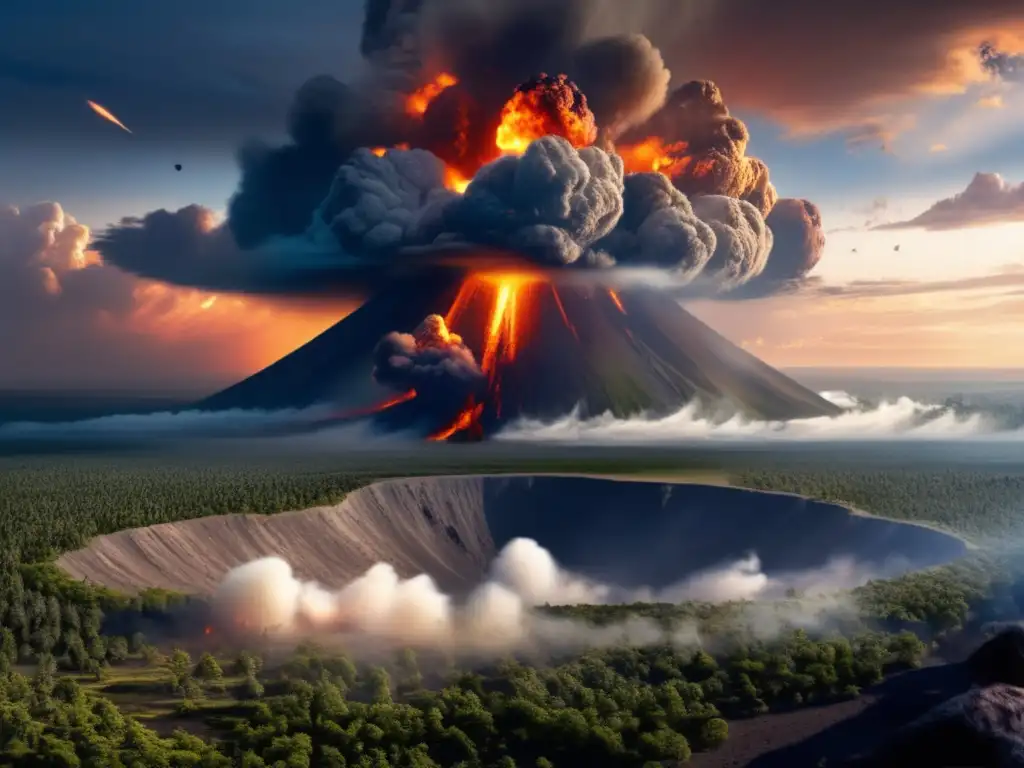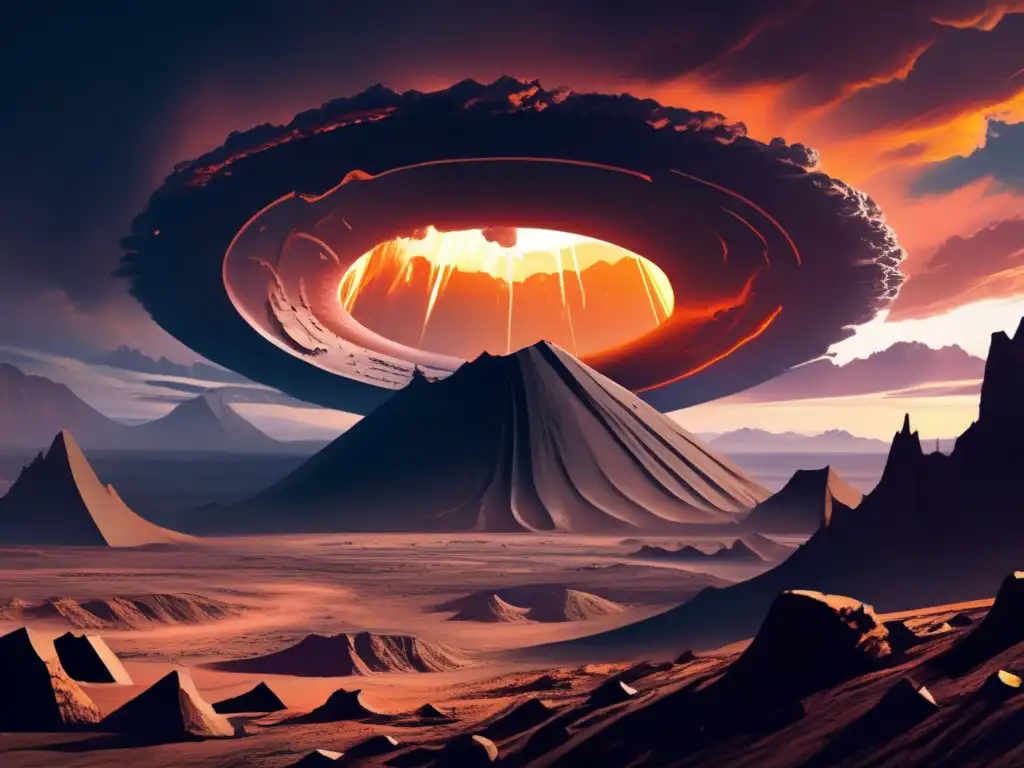Cosmic Catastrophes: The Role Of Asteroids In Mass Extinctions

Introduction
Asteroids have been a fascinating subject for astronomers and scientists for centuries, as they play a critical role in the formation of planets and their evolution over time. However, one of the most significant impacts that asteroids can have on our planet is through mass extinctions.
Mass extinctions refer to the disappearance of a significant proportion of plant and animal life in a relatively short period. Asteroid impacts are one of the known causes of these catastrophic events, which have happened numerous times throughout Earth's history.
The KT Impact Event

The Event
The most well-known asteroid impact event marked the end of the Cretaceous Period (KT extinction). A six-mile-wide asteroid named Chicxulub struck Earth approximately 66 million years ago, causing massive destruction and altering the environment to such an extent that it caused the extinction of about three-quarters of the plant and animal species on Earth, including the dinosaurs.
The Aftermath
The aftermath of the impact was devastating, leading to the release of vast quantities of dust and gases into the atmosphere, triggering wildfires, tsunamis, and climate changes. It took millions of years for the ecosystem to bounce back from this catastrophic event.
Evidence
Evidence of the asteroid impact and its aftermath has been found in various parts of the world. The presence of iridium, a rare element found in high concentrations in asteroids but not on Earth's surface, in sediment layers around the world has been linked to the Chicxulub crater. Other physical evidence includes shocked quartz crystals and tektites, tiny glass beads formed from melted rocks that were ejected into the atmosphere during the impact and later fell back down to Earth.
The Role of Asteroids in Mass Extinctions

Other Extinction Events
While the KT extinction was the most severe, it was not the only mass extinction event linked to asteroid impacts. The Triassic-Jurassic extinction, which occurred about 200 million years ago, was also likely caused by an asteroid impact. The impact of an asteroid or comet may have also contributed to the Permian-Triassic extinction, which wiped out about 90% of all marine species and 70% of terrestrial species approximately 250 million years ago.
Frequency of Impact Events
Asteroid and comet impacts have occurred throughout Earth's history, but the frequency of their occurrence has varied. Large impacts are relatively rare events, with catastrophic ones occurring every tens of millions of years. However, smaller ones, like the Tunguska event in Russia in 1908, happen more frequently.
Mitigation Strategies
Given the potential for asteroid impacts to cause mass extinctions, scientists have been working to develop strategies to mitigate their impact. These include early detection systems, diversion, and deflection techniques. Diversion techniques include using a spacecraft to deflect the asteroid's path using gravity, while others involve sending a spacecraft to collide with the asteroid gently, causing it to change direction. Scientists are also developing nuclear devices to destroy asteroids or create a "launch pad" for other mitigation strategies.
Frequently Asked Questions

-
Can we detect asteroids before they impact Earth?
Yes. Numerous organizations worldwide track asteroids and comets that could pose a threat to Earth. NASA's Planetary Defense Coordination Office, for example, coordinates efforts to track potentially hazardous objects.
-
What is the likelihood of another asteroid causing a mass extinction event?
The likelihood is relatively low, as it would require a collision with an asteroid large enough to cause such an event. However, smaller impacts still pose a risk to human life and infrastructure.
-
How can we protect ourselves from asteroid impacts?
Scientists are currently developing various mitigation strategies, including early detection systems, diversion and deflection techniques, and nuclear devices. However, continued funding and research are necessary to implement these strategies effectively.
-
Could we use asteroids as a resource?
Yes. Scientists are exploring the possibility of using asteroids as a source of valuable resources like water, minerals, and metals. As they are abundant in the solar system, they could provide a more sustainable alternative to mining Earth's resources.
-
What is the future of asteroid study?
Asteroid study is likely to continue being a crucial area of interest for scientists, as they have played a critical role in the formation and evolution of the solar system. Future studies will likely explore their potential as a resource and investigate their impact on planetary and biological evolution throughout the universe.
Conclusion
The role of asteroids in mass extinctions cannot be overstated, as evidenced by the devastation caused by the Chicxulub impact. Although the likelihood of another catastrophic event is relatively low, continued funding and research into mitigation strategies are necessary to protect human life and infrastructure from smaller impacts. As we continue to study asteroids, we may also unlock their potential as a resource and gain further insight into the formation and evolution of our solar system.
Please share your thoughts in the comments section and consider subscribing to www.asteroidrealm.com to stay up-to-date on the latest asteroid news and research. Thank you for reading!
Additional Resources

- NASA's Planetary Defense Coordination Office
- ESA's Space Safety Activities
- Recent scientific paper on asteroid deflection techniques
 Planetary Scars: A Global Tour Of Impact Craters
Planetary Scars: A Global Tour Of Impact Craters The Sky On Fire: The Atmospheric Effects Of Asteroid Impacts
The Sky On Fire: The Atmospheric Effects Of Asteroid Impacts Eye Of The Storm: Surviving An Asteroid Strike
Eye Of The Storm: Surviving An Asteroid StrikeIf you want to discover more articles similar to Cosmic Catastrophes: The Role Of Asteroids In Mass Extinctions, you can visit the Asteroid Impacts category.
Leave a Reply

Articulos relacionados: